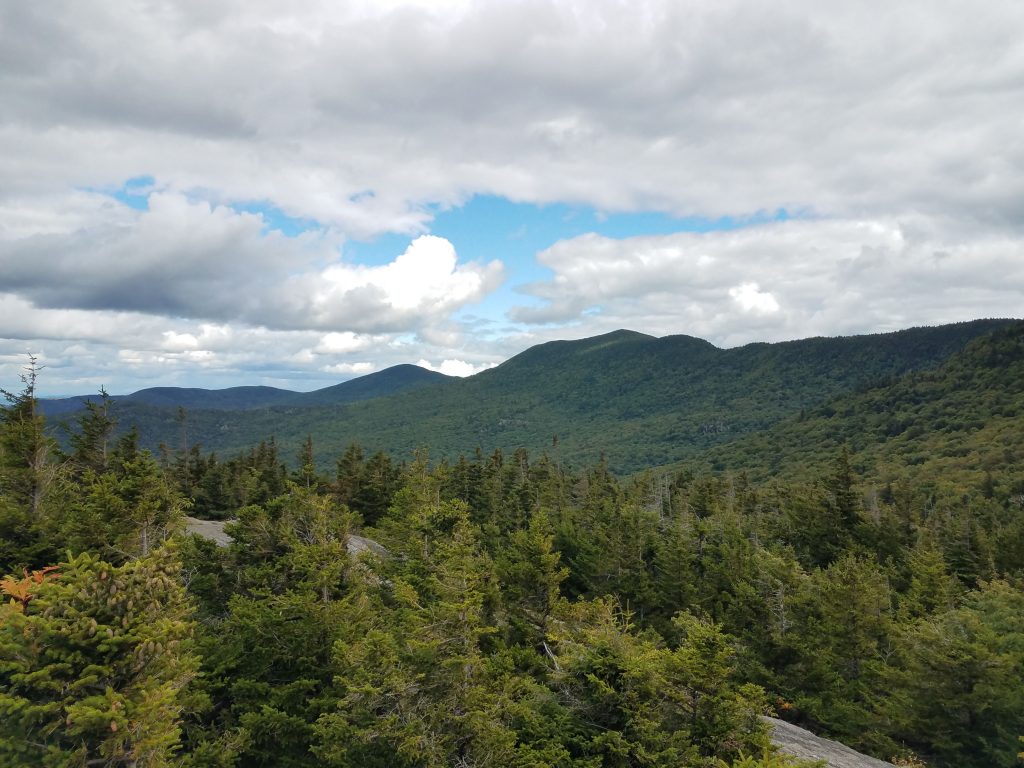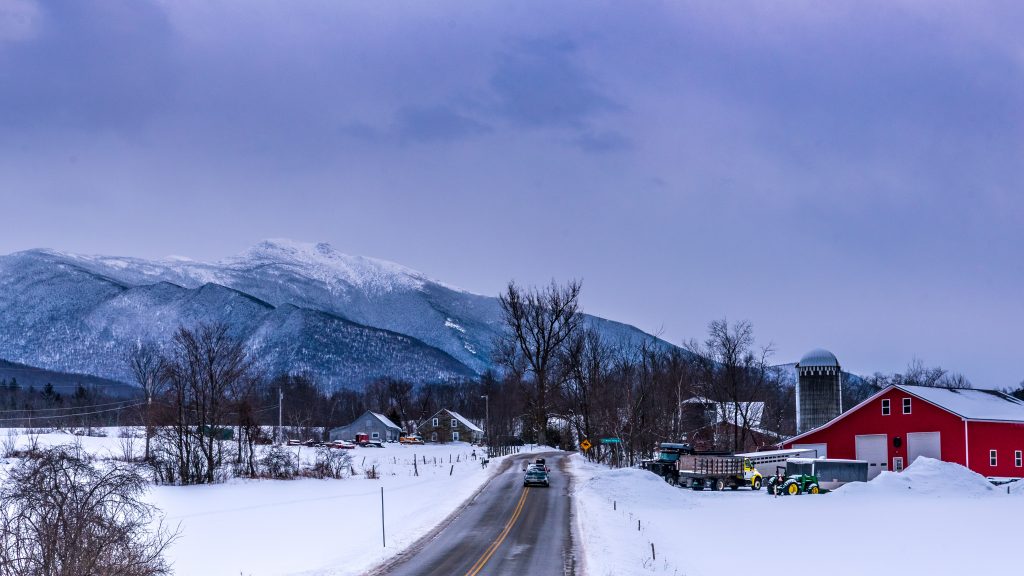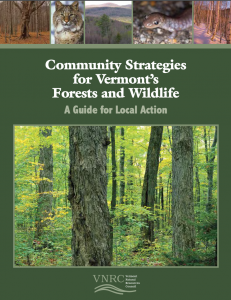Technical Assistance & Education
There are many strategies communities and landowners can employ to help maintain healthy forests and wildlife habitat. Over the years, VNRC has supported Vermont communities by offering technical assistance and proactive solutions to protect natural resources, reduce forest fragmentation, and maintain the rural character of our state.
There are many different ways that communities can help sustain forests and wildlife. Our Guide for Local Action provides town officials and interested citizens with the tools to do just that. Read it here.
Technical assistance to municipalities
VNRC strives to provide technical assistance to interested communities across Vermont. We review and analyze the strengths and weaknesses of existing municipal planning and zoning to identify opportunities for strengthening wildlife, forestland, and natural resources protection.

- We review the strengths and weaknesses of existing municipal planning and zoning strategies to conserve forestland and reduce the impacts of forest fragmentation and parcelization in rural resource lands.
- We develop strategies and model language for municipal zoning bylaws and town plan policies to adequately identify and conserve important forestland parcels and forest resources such as wildlife habitat, watershed functions, recreation resources, timber production areas, etc. (Examples include effective forest reserve districts, town forest designations, wildlife overlay districts, and density bonuses for clustered development, etc.)
- We develop and/or strengthen subdivision regulations to adequately review the impacts of proposed development to forestland resources and ensure appropriate consideration of impacts that may not be covered under state review of development projects (projects outside the scope of Act 250, state permitting procedures for wetlands, impacts from road or trail reclassifications, etc.)
- We develop incentive-based policies for landowners and developers to cluster development and maintain rural settlement patterns in town
- We inform municipalities of state and federal landowner assistance and non-regulatory incentive-based programs designed to keep forestland and wildlife habitat intact and viable.
Wildlife Considerations in Municipal Planning
For the past twenty years, VNRC has collaborated with the Vermont Fish and Wildlife Department (VFWD) to evaluate how Vermont municipalities address wildlife and natural resource conservation in local planning.
Wildlife considerations in local plans were first documented in a 2000 report. A second report, published in 2011, once again looked at wildlife considerations in municipal plans and, for the first time, in zoning and subdivision regulations. This more comprehensive approach provided insights into the relationship between municipal planning and policy implementation through local land use regulation.
The most recent report, Wildlife Considerations in Local Planning: Evaluating Twenty Years of Progress in Vermont, builds on previous efforts to evaluate how municipal planning for wildlife conservation has evolved over twenty years. This report highlights where progress is being made, and where there is still room for improvement.
Spotlight on Act 171

VNRC played a key role in advocating for Act 171, which was enacted in 2016 to promote strategies to maintain intact forests in Vermont. It requires municipalities and regional planning commissions to identify areas that are important as forest blocks and habitat connectors and to plan for development in these areas to minimize forest fragmentation.
In collaboration with the Agency of Natural Resources and the Central Vermont Regional Planning Commission, we helped to develop an Act 171 planning guide that gives municipalities concrete guidance on how to maintain forest blocks and wildlife connectivity areas. Find it here.
With our partners, VNRC also developed a series of webinars to educate municipalities and regional planners on how communities can reduce forest fragmentation through land use planning. We continue to reach hundreds of planners and town officials through these webinars.
VNRC has assisted many towns in Vermont, such as Marlboro, Jericho, Bolton, Marshfield, Huntington, Richmond, Enosburg, and Montgomery, to implement land use strategies to better support animal habitats, maintain habitat connectivity, and reduce forest fragmentation. Our technical assistance helps conservation and planning commissions turn their vision into tangible strategies to maintain important natural resource at the local and landscape level.
Real estate agent and engineer trainings

Real estate professionals, engineers and site technicians are in a position to shape future development in Vermont. They provide advice to their clients that influences how land is subdivided, built upon, and managed in Vermont — and they have a direct effect on the developed and natural landscapes that characterize the identity of the state.
Now these professionals have the opportunity to learn more about how to incorporate natural resource planning into their work with landowners with the help of training sessions offered through VNRC and partners.
The sessions are entitled “A New Way of Seeing the Landscape: Tools for Helping Real Estate Agents, Engineers & Site Technicians Plan and Develop with Natural Resources in Mind.” Click here to access the training.
The training session is designed to help development professionals understand how land can be managed and developed with natural resources as a consideration. The sessions also can provide them with additional knowledge of what natural resources may exist on a property, a value increasingly in demand by consumers.
Over the years, VNRC has supported Vermont communities by offering proactive solutions to reduce forest fragmentation and parcelization to maintain the rural character of our state. There are many different ways that communities can help sustain forests and wildlife at the local and regional levels.
Our Guide for Local Action provides town officials and interested citizens with the tools – both regulatory and non-regulatory – to do just that. Read it here.





